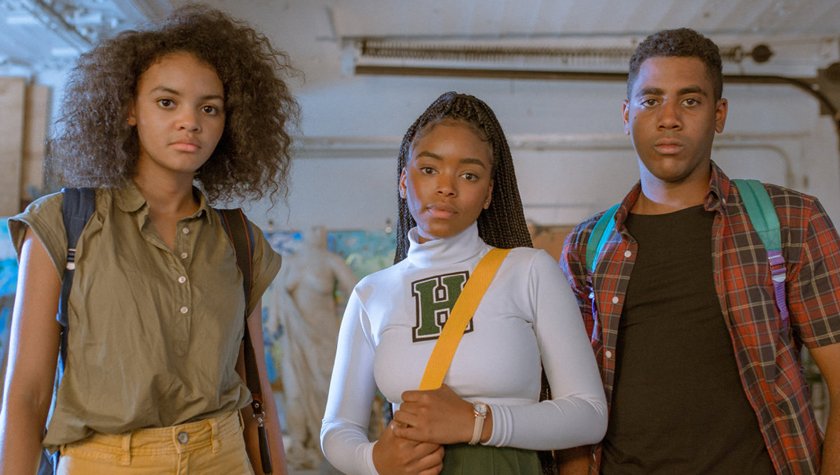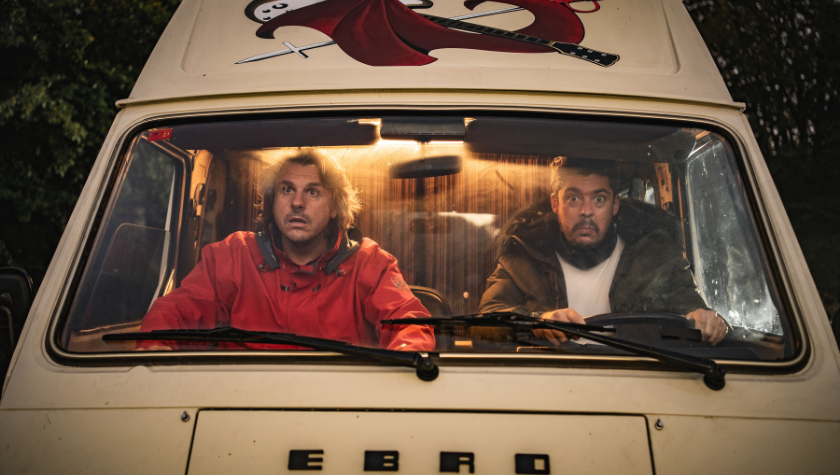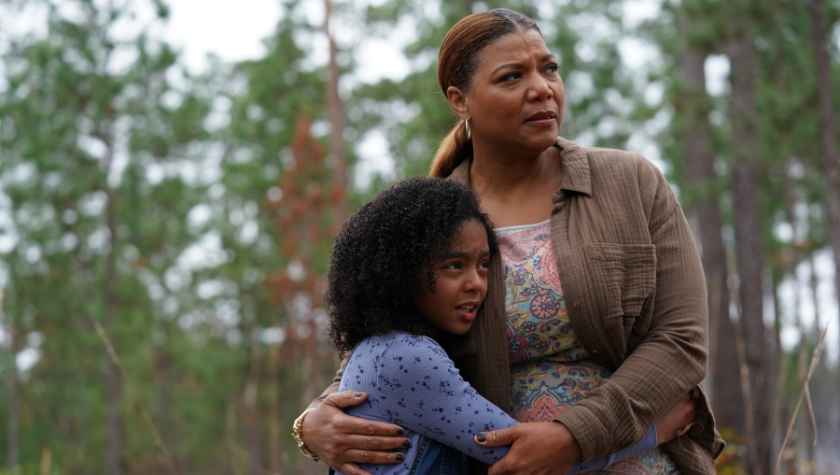Nate Myers' Script 'American Terrorist: Jesse James' Challenges "Outlaw Heroes"
July 28, 2020
In light of the recent Capitol Riot in Washington, DC this past January, Nate Myer’s script “American Terrorist: Jesse James” holds a mirror up to people thinking they’re above the law à la Jesse James. The story asks white America to reexamine its self-created image of being “outlaw heroes”.
We've seen so many stories in the general media that humanize and justify white male terrorists. Homegrown and often idolized by many of the population for their various roles in the public eye, they're tut-tutted on late night television; dismissed as harmless. But are they? We’ve seen profiles of neo-Nazis in The New York Times that depict “they’re just like us” with their families in the grocery store. Even American Horror Story season one's “Murder House” somewhat exonerates (white male teen) Tate Langdon, who shoots up his high school and kills his peers, by showing him as a sensitive, troubled boy who just wants love. He's merely influenced by evil, not the evil itself. This type of exposure can be a detriment to society, and is part of Myer's inspiration for American Terrorist. His story will show one of America’s greatest “heroes” in a different, harsh and thus more realistic light.
Myers is a transplant to Los Angeles and has been learning the post production side of the entertainment business while he writes. He’s also an avid photographer with a great eye for the various sides of humanity. His pilot script made the quarterfinals of the Final Draft Big Break Screenwriting Contest®, and it also placed on The Bitch List, which highlights not only the entertainment industry’s most liked Bechdel Test-passing screenplays, but that also puts an emphasis on those stories that can pass things like the Duvernay Test, Ko Test, and others that show various kinds of named women characters who engage in dialogue — and not just about a man.
His script did change between The Bitch List and Big Break, notably in sequencing. Myers says, “Jesse James bounces back and forth between three different timelines, and between the two competitions, I clarified and strengthened the moments when we jump from one to the next.” And this got the attention of seasoned judges like Jewerl Ross, Sonia Gambaro, Roberto Larios, Michael Chung and others to rise to the top from thousands of submitted scripts.
“I, like many, grew up with the notion that Jesse James was a Robin Hood-type figure, so to paint him in a more accurate light of being a domestic terrorist is a little shocking, and (hopefully) compelled readers to want to know more. Furthermore, I believe this script is particularly relevant now, given the rise of white nationalism and how our country is reckoning with its racism and the generational trauma it's caused.”
And what inspired Myers to write this story? “My interest in generational trauma and how its impact on the individual can destroy a community. The choices that make a person who they are. I wanted to write something that didn’t excuse Jesse James’ actions, but possibly gave insight into how someone like him could come about, and maybe even prevent a similar rise in the future.” Myers has some similarities with the character he dissects and why, “The most obvious, is that I’m a fellow Missourian. And Jesse and I were both raised by single mothers (don’t worry, the similarities end there). I feel strongly that it’s time we engage with our collective past in order to strive for a better future.” Myers notes that when the pilot is picked up to series, the writers room will feature Black writers because lived experience is very important in the telling of those who stood up to Jesse James.
Denise Hewitt’s Scriptd.com teamed up with The Bitch Pack (who issues The Bitch List) to produce a series of free script read events at Art Share in Downtown Los Angeles in the pre-Covid days, and Myers’s script was one of those chosen to be heard out-loud with a full cast.
“It was an incredible experience that validated some choices I wasn’t certain about, particularly with dialogue that can be a little tricky. But more importantly, it made me realize that there were places where I could trust the reader more on a story level, which was exciting.”
Besides writing, Myers also directs. His partner CJ Hoke also made The Bitch List one year. She wrote an amazing short play called Snow that Myers directed in 2019 for The Hollywood Fringe Festival. Before things shut down because of the pandemic, Myers also finished shooting an entire feature length film titled This Could Be Your Home with a skeleton crew in two cities. This Could Be Your Home is about a St. Louis activist who’s trying to balance between saving her city, her old relationship, and herself. In January 2020, the crew shot for six days in St. Louis where Myers grew up and for six days in Los Angeles. As he sums it up, “fortunately, everyone was capital G great, so we were able to pull off a film that I’m extremely proud of.”
The two leads had similar things to say about Myers. Adrienne Rose White, who plays activist Zelzah, says, “Nate was an amazing collaborator… He was so engaged and engaging, so willing to take feedback and risks, yet still maintaining a deep and steadfast grasp on his vision.” Actor Chris Mollica, who plays the artist Sazerac, expands this sentiment: “I truly appreciate the empathy Nate brings to his scripts. He treats each character as human and flawed which, as a flawed human, is a pleasure to play and to witness.”
While shooting This Could Be Your Home, Adrienne recalls “one night that Nate, my co-star Chris, and I stayed up past midnight, perched on the furniture, huddled under blankets in the draftiest room of the house the production had rented. It was the night before shooting a big scene, and we were thinking and rethinking how we could make the arc and dialogue more true to the character’s inner life.” When asked if she’d work with Myers in the future, Adrienne was emphatic: “Working with Nate has been such a privilege, and like anyone who’s worked with him in the past, I’m dying to collaborate again!” A year after shooting, the feature is almost complete; Myers and his team are currently color-correcting and gearing up for the festival circuit.
And what’s next for Myers? His next project will be writing and directing a screwball feature about three criminals planning a bank robbery as they fall in and out of love with each other. If you’re wondering who we might see in a Nate Myers production in the future, he mentions who he’d like to work with: “There are so many people it’s hard to narrow it down, but Janelle Monae, Maya Rudolph, and Jack Black are a few that pop into my head.” You heard it here first.
Written by: Thuc Nguyen
Thuc created The Bitch List, the feminist answer to The Black List. She was born in Vietnam. As a one year old her parents took her out to sea on a tiny dinghy. They were boat people and miraculously landed and were taken to a refugee camp and were then sponsored to the US. Thuc grew up as a Southerner in Kinston and Raleigh, North Carolina and then in Charles County in Southern Maryland. She went to The University of North Carolina at Chapel Hill. After this she moved to London and worked for Amnesty International and Saatchi & Saatchi Advertising. Next was New York City for half a decade, then Los Angeles where she was a TV writers' and producers' assistant on a Warner Brothers/Jerry Bruckheimer television show. Thuc then went to UCLA and earned her screenwriting certificate. She also has a Masters Degree in Non-Profit Management. Thuc is a dual citizen of The US and The Republic of Ireland and known for being a highlight in " Heroines of Cinema" and owning a number one spot on Indiewire's list of Best Screenplays Not About Straight White Guys.



